Maclean’s Cover illustration 1952
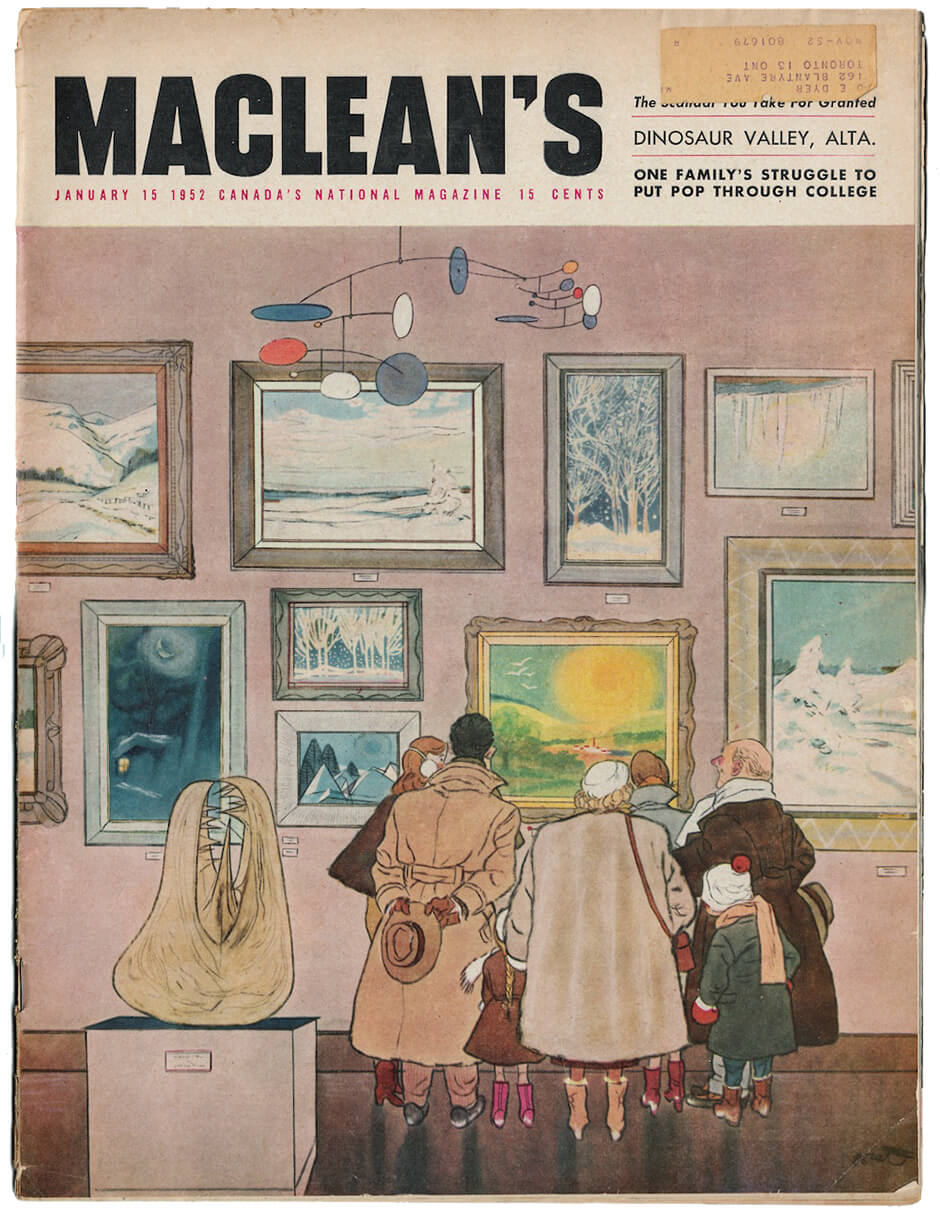
Oscar Cahén, Cover illustration for Maclean’s, January 15, 1952
Tearsheet, 35 x 27 cm
Original in illustration in a private collection
Oscar Cahén designed thirty-eight covers for Maclean’s, then Canada’s dominant national magazine. Magazine covers were prestigious because they allowed more freedom than most other kinds of illustration assignments; it was the artist’s responsibility and privilege to come up with smart ideas, for which he or she was well compensated. Seen across the entire nation, sometimes framed to hang on people’s walls, Maclean’s covers were ideal for delivering an important message in the guise of a playful cartoon.
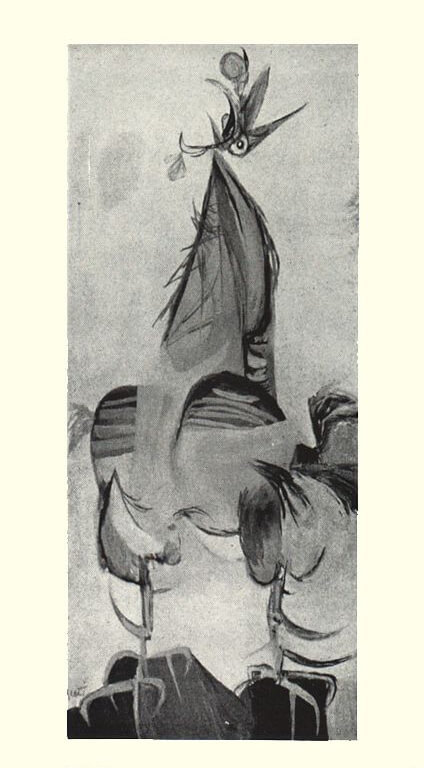
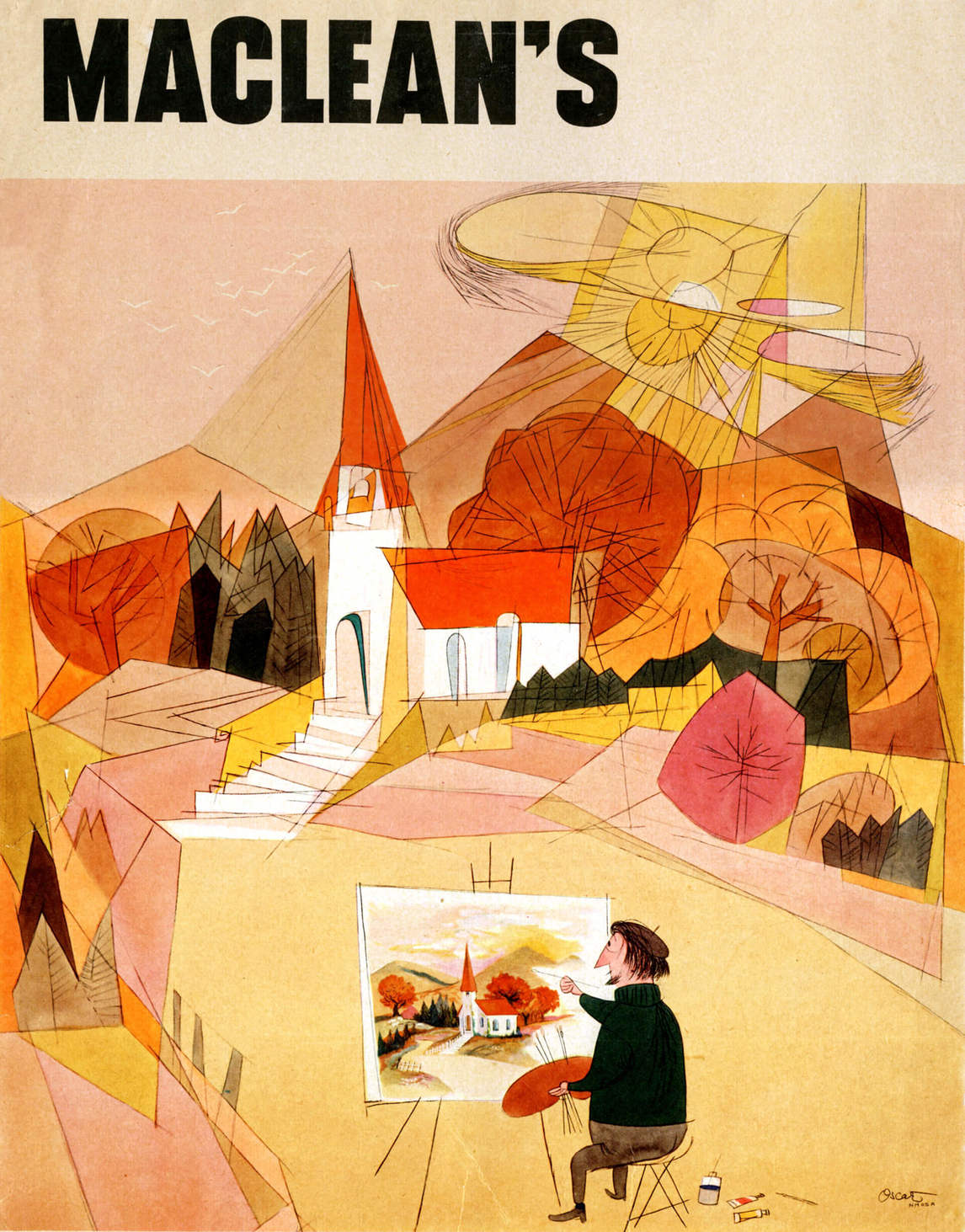
Cahén and his colleagues were confronting a Canadian art milieu that saw abstract art as mere “meaningless doodling.” During the 1951 exhibition of the Ontario Society of Artists (OSA), conservative artists resigned in protest over the new swell of modern art. In press coverage of the controversy, Oscar Cahén’s Expressionist Rooster, c. 1950–51, was singled out. Consequently, Cahén designed this cover poking fun at a cliché of Canadian art: the wintery landscape, such as the Group of Seven had painted. In the illustration, the art gallery wall is lined with them, but the winter-weary visitors in their heavy clothing have eyes only for the one summer scene—marked sold with a red star.
In a related cover that ran a couple of months prior, Cahén designed a cover showing an artist insistently painting a traditional landscape while the world he is painting is unmistakably Cubist. The illustrator thus questions the assumption that a conventionally representational view of the world is always the “correct” one. In the corner appear the letters “N.M.O.S.A.”—likely standing for “Non-Member of the Ontario Society of Artists.”
Cahén often put personal subject matter into his illustrations: in one work his toddler son waits for Santa Claus, in another he eyes jam being cooked by his mother. The church that the artist paints here appears on several covers. According to the artist’s son, Michael, it was inspired by a church in the (then) small village of King City on the outskirts of Toronto, where the Cahén family lived from 1947 to 1954.

 About the Author
About the Author
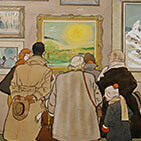 More Online Art Books
More Online Art Books
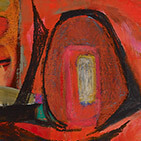 Acknowledgements
Acknowledgements